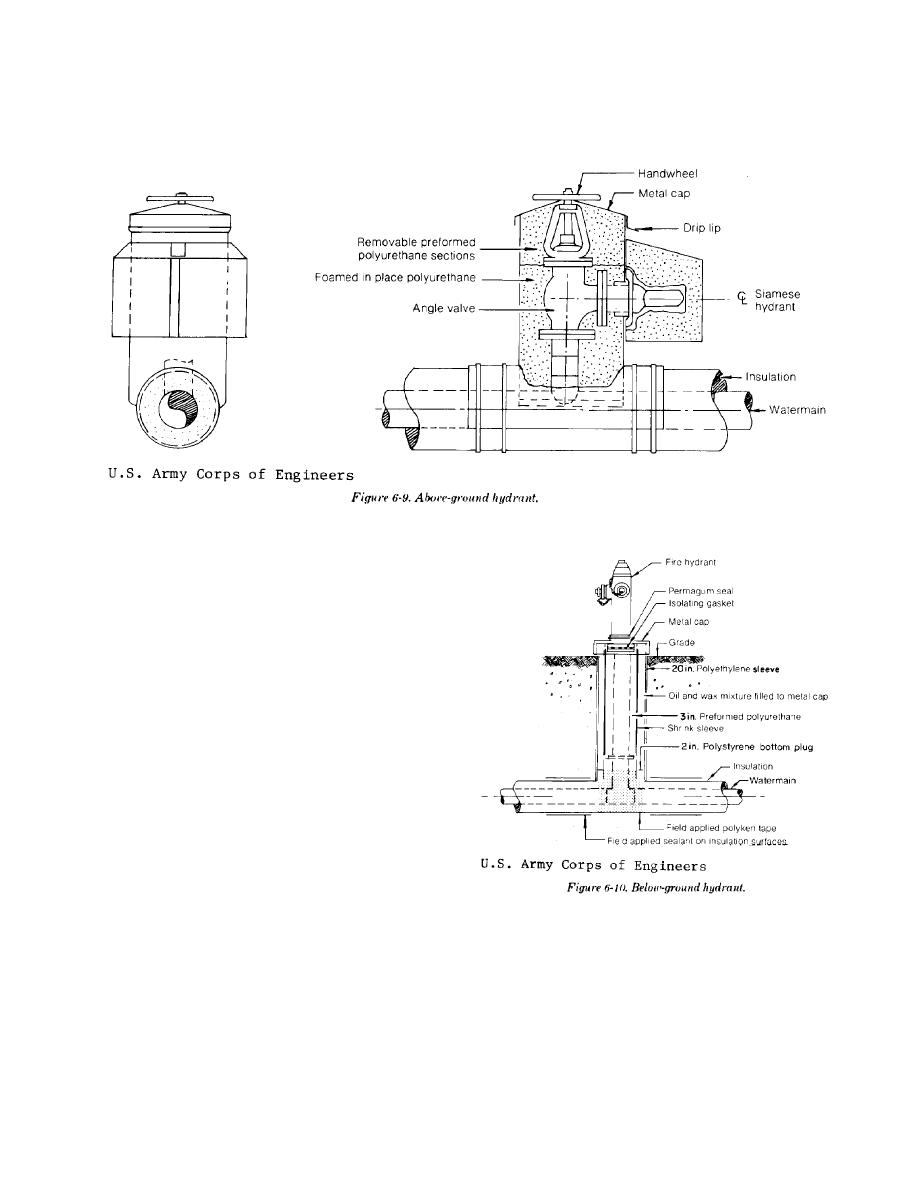
TM 5-852-5/AFR 88-19, Volume 5
heave damage. Isolating valves are typically put in
the pipe with or without heat contact cement.
the main or both sides of the tee to allow for
Common wattages used are 2.5 watts per foot for
hydrant repair or replacement. After use the hydrant
service lines and 4 watts per foot for main lines.
must be pumped out since frozen ground conditions
may prevent self draining.
b. Valves. Typical details for valve installations
are shown in figures 6-5 and 6-7. The riser stem for
buried valves is insulated in a manner similar to that
described above for hydrants. Non-rising stem-gate
valves are most practical for buried or completely
insulated locations.
6-7. Backup freeze protection.
These are reserve systems to either prevent freezing
if circulation stops in the lines or to thaw the system
if freezing occurs. The procedures apply to both
main lines and service piping. These include
electrical heat or steam tracing to prevent freezing
or to thaw, and electrical resistance heating and
steam or hot water to thaw systems.
a. Heat trace systems. A heat trace system is the
standard back-up used in most piped water distri-
bution systems. While it is effective, both the initial
capital cost and operating cost for this type of pro-
tection are substantial. Constant monitoring must be
This method is less efficient on plastic piping. In
carried out on such electrical systems if they are to
Greenland and northern Scandanavia the heat trace
perform as intended. If the controlling thermostats
is placed inside plastic pipes. The calculation
are not working properly or the sensing bulbs are in
procedures presented in chapter 12 can be used to
the wrong location, either too much electric energy
determine heat tracing design requirements.
will be expended at great cost or it will fail to do the
b. Steam or hot water thawing. This system uses
job when required. Easy replacement of heat trace
a source of steam, such as a portable steam jenny, or
lines should be a standard feature of any system.
hot water introduced under pressure into the frozen
The heat trace normally used is the constant watt
pipe via a suitable hose or tube to thaw out the pipe.
per foot type placed in a conduit or channel next to
This system can be used with most types of pipe
6-7



 Previous Page
Previous Page
